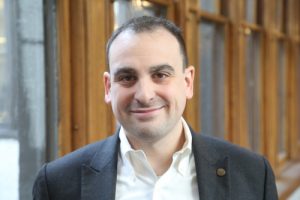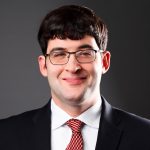Firm
Reopening/WFH Policy
Arent Fox
On July 6, all of the firm’s U.S offices will be open, and employees will likely come in once a week, eventually working their way up to coming in twice a week; it’s expected that all personnel will maintain a “routine physical presence” in the office, but remote work flexibility is still on the table
Baker McKenzie
Firm is planning to reopen its North American offices in early September; remote work from home is still on the table at the firm, but in-person interaction will be highlighted
Cadwalader
Office attendance is encouraged, but not required, through Labor Day 2021; thereafter, and through year-end, office attendance is expected, but not on a full-time basis; in 2022, the office will be the “primary workspace” for attorneys and staffers
Clifford Chance
The firm will return to office-based working, starting on September 13, with up to two remote days each week for both attorneys and business professionals (and time spent with clients outside the office will be considered time in the office); the firm will require all employees to be vaccinated by September 13, and provide proof of vaccination
Cooley
For the remainder of 2021, the firm won’t institute a “mandatory” return to office date or require a minimum number of in-office days, and notes that “our workplace of the future will be neither fully remote nor fully in person”; by Labor Day, anyone working in-office or visiting an office must be fully vaccinated
Covington
Employees are expected to return on September 7, and the firm will use a hybrid work model for attorneys and staff; employees should plan to spend at least three days in the office and will be able to work two days remotely; new associates encouraged to work more than three days per week in-office
Dechert
Firm hopes attorneys will come into office on voluntary basis this summer; attorneys expected to come into office starting on September 13, on at least a part-time basis; firm will allow for hybrid work arrangements, but requests that lawyers spend about half their time working in-person on days of their own choosing; firm “strongly encourages” vaccination
Davis Polk
Firm is setting up two days in May for a “Spring Back to the Office” program; Davis Polk will remain in a “voluntary return posture” until Labor Day, and will then switch to a hybrid return model (details to be announced after July 4th); the firm’s full reopening plan includes
3-4 workdays spent in-office with the possibility of floating remote weeks for attorneys
Davis Wright Tremaine
Firm has announced that once its employees are eligible to get vaccinated, they will be encouraged to do so soon as possible; thereafter, only those who have been vaccinated will be allowed to enter the office or to attend firm-sponsored events; in the future, the firm will require proof of vaccination
Dickinson Wright
Firm has informed all employees that they must be vaccinated in order to come into any of the firm’s 19 offices; the new policy will also apply to all firm events
Faegre Drinker
Firm’s hybrid work schedule is set to begin after Labor Day, and lawyers will be free to make their own in-office schedules; firm has a voluntary vaccination policy, and fully vaccinated employees may request exemption from the firm’s mask mandate; employees must complete daily health screenings
Fenwick & West
The firm has implemented a vaccine mandate as part of its health and safety procedures during its soft opening and will “require all personnel to be vaccinated before coming into our offices”; the firm will “provide wide latitude and flexibility for remote work” through the end of 2021
Gibson Dunn
Firm will will welcome employees back to the office on September 13, but lawyers will be free to make their own schedules, working remotely “whenever it is appropriate” becayse such flexibility is needed for lawyers to have “full, well-rounded, happy lives”
Goodwin Procter
In-office operations at the firm will resume on September 13, 2021; the firm will be “taking a flexible approach to working from our offices,” and does
not expect the five-day, in-office workweek to return; lawyers are encouraged to be in the office at least three days per week starting the week of September 13; firm will begin to “hotel” office space for those who will be in the office fewer than three days per week; vaccination is not required, but will be “strongly encouraged”
Hanson Bridgett
Firm introduced a vaccine mandate on July 23, and the new policy will apply “for anyone working in or visiting any of Hanson Bridgett’s five physical office locations or attending a firm-sponsored event at other locations”; paid time off will be provided for employees to get vaccinated; 93% of its personnel are already fully vaccinated
Hogan Lovells
Firm states that only fully vaccinated employees may return to the office prior to September 13; thereafter, the firm will assess whether vaccinations will still be required for entry
Hueston Hennigan
Employees were encouraged to return to the firm on a voluntary basis starting on June 15, with one requirement: vaccination, with proof; the firm had been planning a full return to the office after Labor Day, but the new surge of Delta infections has made management start to rethink things
Jenner & Block
Firm will start allowing lawyers to return to U.S. offices, on a voluntary basis, starting June 7 (subject to government occupancy restrictions, social distancing, employees being vaccinated, or having a negative PCR test); this is the first phase of the firm’s plan, with the ultimate goal of having as many offices as possible return to normal occupancy levels, with appropriate flexibility, and office as the primary workspace
Jones Day
Lawyers at the firm’s D.C. office, “who are able to do so,” are encouraged to start working from the office on May 24; rooftop get-togethers will begin on June 13
Katten
Firm will reopen after Labor Day, but will not require lawyers to spend a “particular number of days in the office”
Kirkland & Ellis
Because the firm believes that an “office-centric work environment is necessary,” starting on September 7, lawyers should plan to return to the office as their “routine baseline”
Kramer Levin
The firm is expecting attorneys to return to the office “sometime in September, but not before September 20”; attorneys will not have to work in-office every day (firm is “planning for our attorneys to be able to work some days in the office and some days remotely on average each week”)
Kelley Drye
The firm is encouraging its lawyers and staffers to voluntarily come to the office “from time to time” this summer; after Labor Day, firm “expect[s] to move to a fuller return to the office with flexibility for remote work”
Latham & Watkins
The firm will undergo a “gradual transition” back to the office this summer, with the “general expectation” that by mid-September, attorneys and staffers “will have re-established their regular routine of working from the office”
Loeb & Loeb
Firm will invite employees back to the office in three phases: after the July 4th holiday, employees can visit the office voluntarily; after Labor Day, the firm will encourage a “somewhat more meaningful return to office,” which will last “through at least the end of 2021”; thereafter, Loeb will evaluate its new hybrid way of working to figure out what will the future of the firm will look like
Lowenstein Sandler
Firm announced on April 30 that it would be rolling out a three-phase reopening plan, until July 4, employees are invited to “try out the office”; starting July 6, employees are invited to return on a voluntary basis for “a day or two each week”; after Labor Day, employees are expected to be working in an office “most of the time” (i.e., three or more days each week); effective August 2, the firm will
require all employees to be vaccinated to return to office; firm may delay next stage of its reopening plans due to recent surge of Delta infections
Mintz
Firm has announced that employees may return voluntarily starting on July 6, and those who are vaccinated will no longer need to wear masks or socially distance from colleagues; those who are unvaccinated will not be allowed to enter building and will continue to work remotely until September
Orrick
Firm is targeting a September return to work (post-Labor Day), and those who are able to do their jobs remotely will not be required to return to the office five days a week
Paul Hastings
Lawyers and staffers are expected to return to the office on September 7 (potentially on an everyday basis); according to firm’s return-to-office memo, “by default, we should work from the office when we are able”; in a second memo, the firm seems to have
walked back its prior “by default” language, stating its intention to remain a flexible workplace
Paul Weiss
Attorneys and staff are expected to return to the firm on September 13; the firm will be requiring everyone who enters its offices to be fully vaccinated
Perkins Coie
Lawyers and staffers are expected to return to the office on October 1; lawyers will come into the office a set number of days (and they’ll able to choose which days themselves); more than half of employees have already been vaccinated, but the firm will still require masks and social distancing
Reed Smith
Firm will roll out a three-phase reopening plan: in June, the firm will host “Welcome Back Wednesdays,” where all employees will be encouraged to sign up to work one office Wednesday; on July 6, the firm will have a soft opening, where employees will be able to come into the office by reservation only; on September 7, all U.S. offices will be fully reopened; lawyers will
not have to work a set number of days in the office, even when the firm has fully reopened, but will be expected to maintain somewhat of a “routine physical presence”
Ropes & Gray
“Permissive office usage” will continue in U.S. offices
until Labor Day in September; thereafter, the firm will provide “at least 45 days’ notice before moving from permissive usage to a broader office return”; on May 5, the firm announced a three-phase reopening plan, culminating in November with a three-day, in-office workweek; firm will
provide free food every day of the week after Memorial Day through Labor Day
Sanford Heisler
Firm has announced a COVID-19 vaccination requirement for all of its attorneys and staff prior to their return to the office; firm plans to reopen its offices in June, and employees are expected to come in at least part-time by September
Sheppard Mullin
The firm has announced a relaxed, three-phase reopening plan, inviting those who are fully vaccinated to return to work on “some days,” to “do your best” to come to the office “on some days” after July 6, with the expectation that people to “come to the office on some days” on September 7 and thereafter
Sidley Austin
The firm is in the midst of a “gradual and flexible transition” to its U.S. offices, and “[o]pportunities to work remotely will remain during the transition and in the future”; the firm is focusing on “empathy and understanding” in its return to the office, and will “preserv[e] the ability to work remotely as needed and appropriate” even after it fully reopens in September
Simpson Thacher
Firm will formally reopen on September 13, 2021, with “the ultimate goal that attorneys be in the office 3-4 days a week on average”; STB will “strongly encourage” all personnel to be vaccinated
Skadden Arps
The firm is setting its sights on a September 13 formal reopening of its U.S. offices, with a hybrid work model that will include at least three days of in-office work, but “remote work flexibility will be part of our work routine going forward”; the firm is not requiring vaccinations, but unvaccinated employees must be tested for COVID-19 prior to entering the office
Stroock
Both attorneys and staff members will be able to work on a hybrid schedule to “break down … class barriers”
Sullivan & Cromwell
The firm will require its attorneys to return to the office in July; associates unhappy with seeming lack of remote work opportunities; chair Joe Shenker claims the return to office is
not mandatory, but “strongly” encouraged
Venable
The firm will make a “gradual return to the office,” but hasn’t provided a formal reopening date yet, hoping instead to “populate our offices in greater numbers beginning in September”; the firm will “provide flexibility for remote work for most roles for the foreseeable future” and is encouraging all personnel to get vaccinated
Weil Gotshal
The firm’s New York, Boston, D.C., Miami, Dallas, and Houston offices will be opened at 100 percent capacity beginning in June; the firm “encourage[s] people to return to the office on some basis, as it is part of the return to the new normal”; a full return to the office will be after Labor Day, on Tuesday September 7; the firm expects all employees to be vaccinated, and those unvaccinated will have to undergo COVID-19 testing; firm will offer
two remote days to attorneys each week, and partners are expected to have a “significant in office presence”
White & Case
The firm will formally reopen after Labor Day, after which a “flexible approach to remote working” will be offered through the end of the year, with attorneys in office just two or three days per week
Wilson Sonsini
The firm will not require its attorneys to return to the office in 2021; from June 1 until September 20, 2021, the firm will start the reopening process (those who want to go into the office will be allowed to do so); on September 20, 2021, the firm will reopen its U.S. offices with full amenities and services, but
no one will be required to go
Willkie Farr
The firm will not require its attorneys to return to the office in 2021
 Staci Zaretsky is a senior editor at Above the Law, where she’s worked since 2011. She’d love to hear from you, so please feel free to email her with any tips, questions, comments, or critiques. You can follow her on Twitter or connect with her on LinkedIn.
Staci Zaretsky is a senior editor at Above the Law, where she’s worked since 2011. She’d love to hear from you, so please feel free to email her with any tips, questions, comments, or critiques. You can follow her on Twitter or connect with her on LinkedIn.






 Kathryn Rubino is a Senior Editor at Above the Law, host of
Kathryn Rubino is a Senior Editor at Above the Law, host of 
 Diana Warshow is Senior Counsel at
Diana Warshow is Senior Counsel at 









 Jordan Rothman is a partner of
Jordan Rothman is a partner of